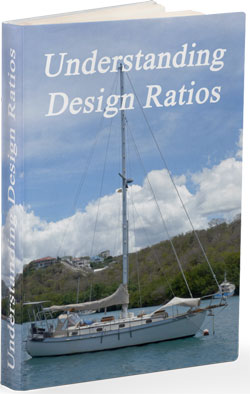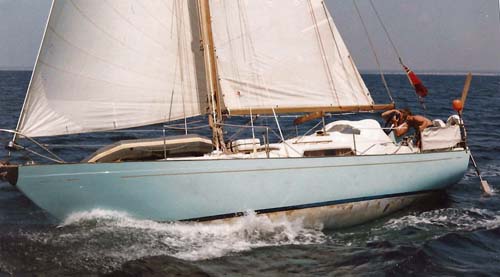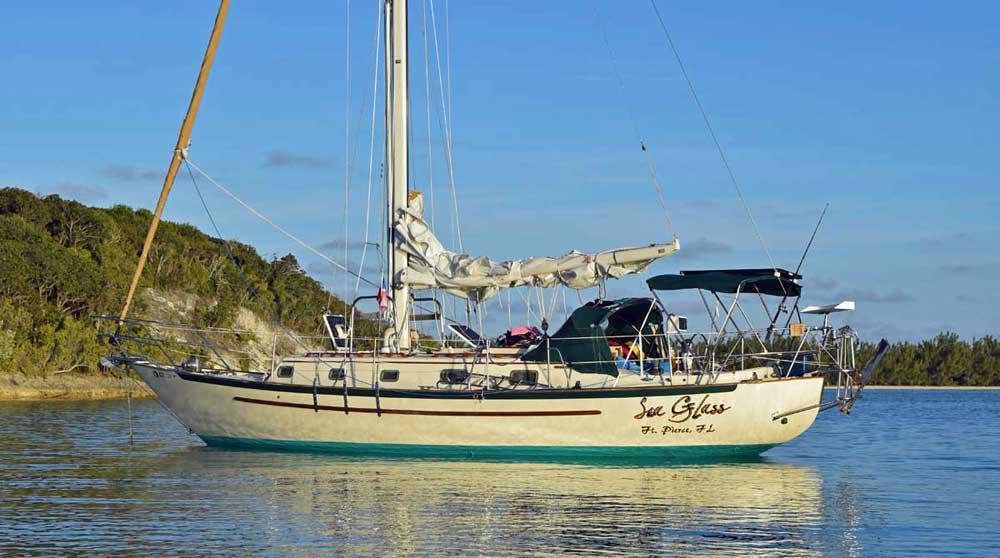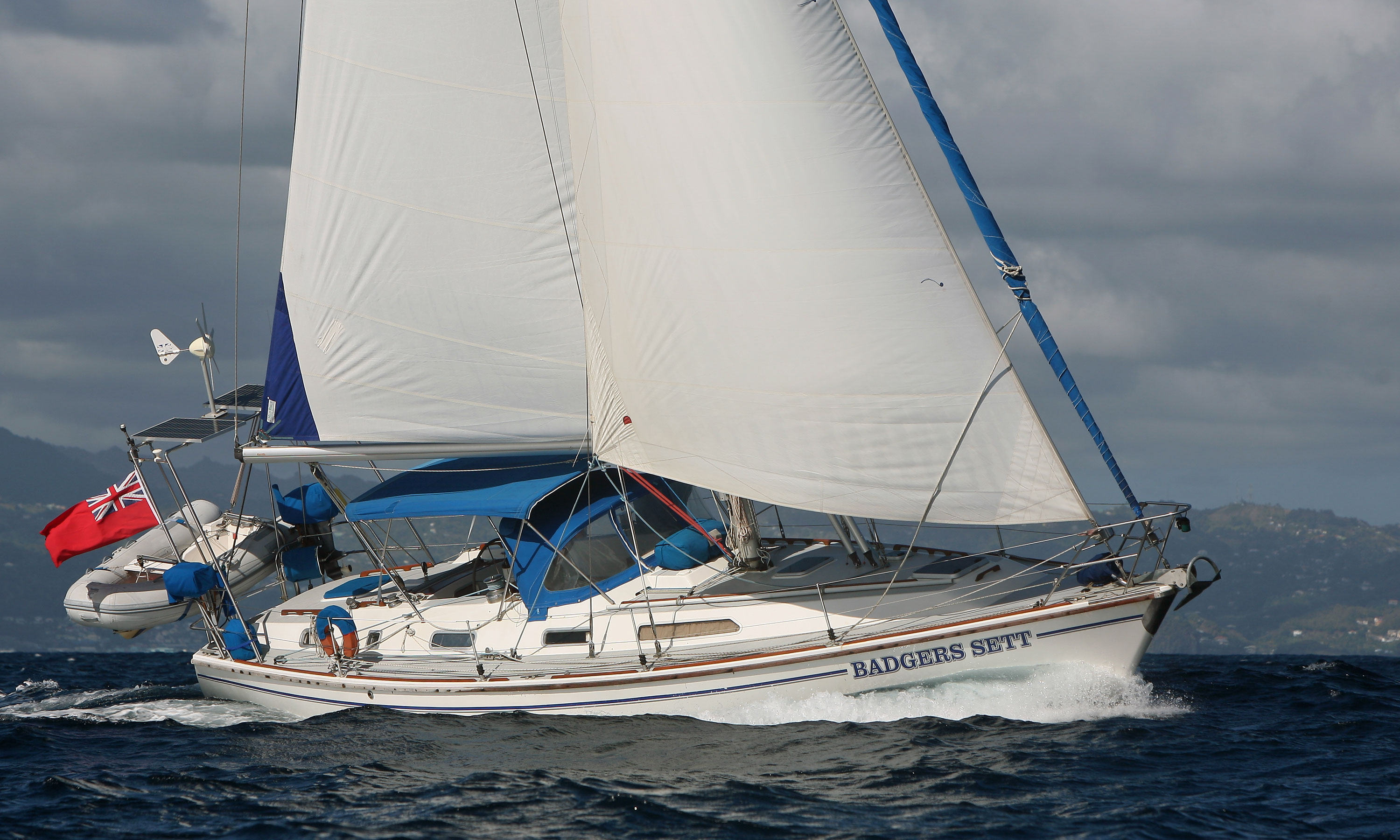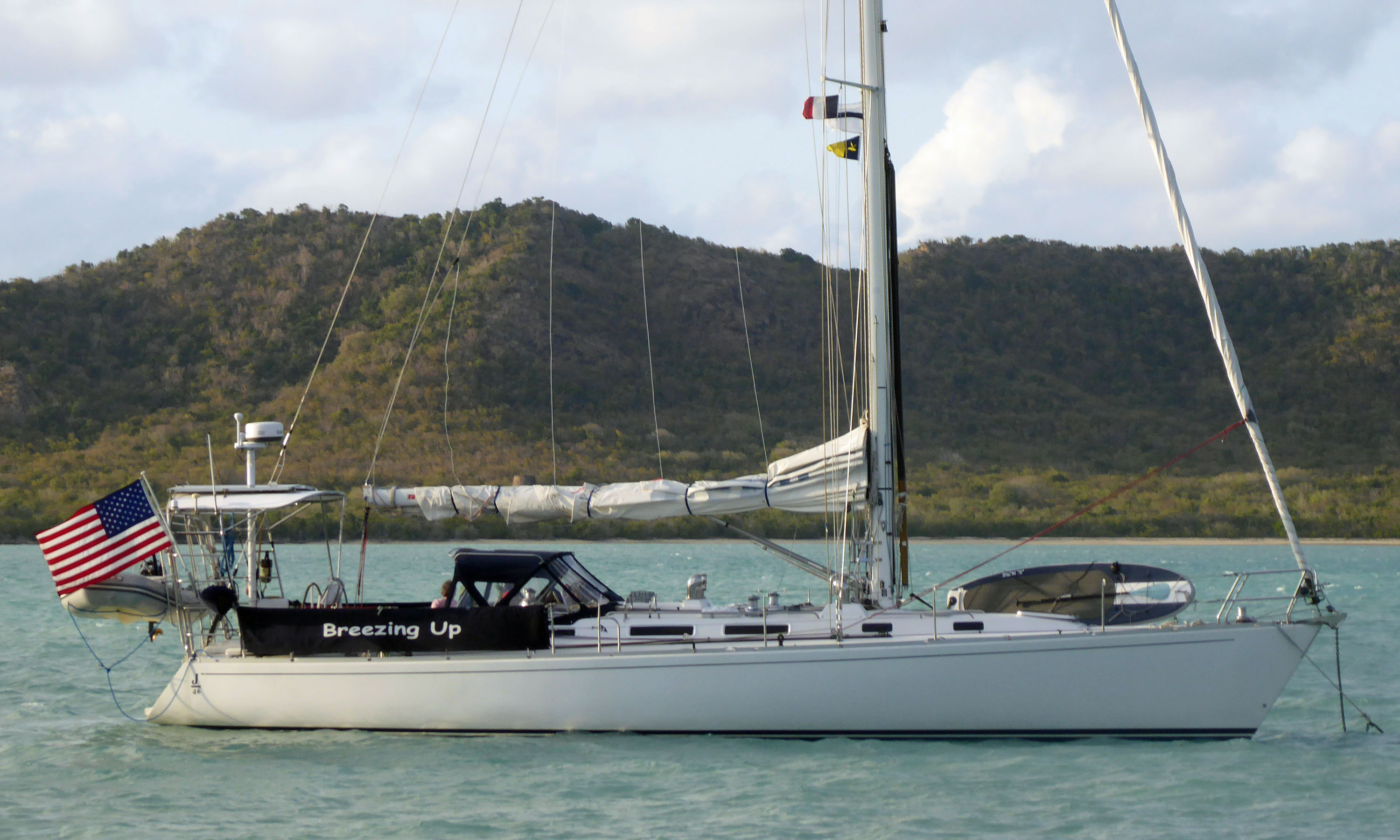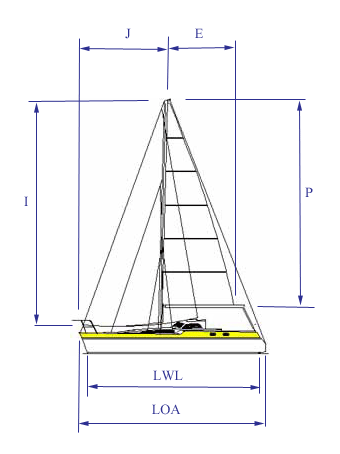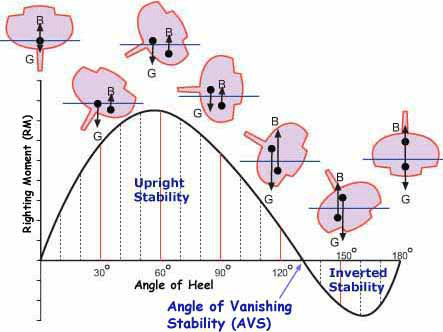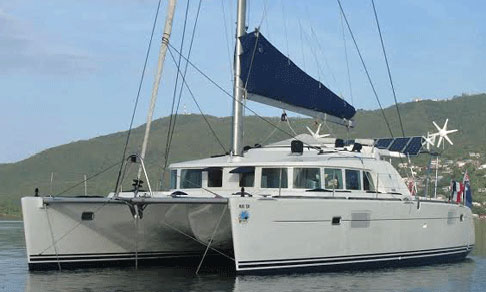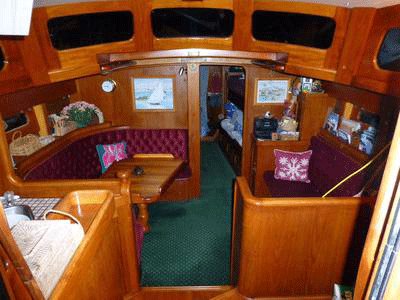- Home
- Design Basics
- Boat Displacement
Boat Displacement/Length Ratio & Other Key Performance Indicators
A boat's displacement is defined as the weight of the volume of water displaced by it when afloat. It's normally described in long tons (1 ton = 2,240 lbs) but it can also be stated in cubic feet, with 1 ft3 = 64lb.
Like hullspeed, displacement doesn't mean much unless compared to waterline length,so you need to take a look at the Displacement/Length Ratio to compare the relative heaviness of boats no matter what their size.
Similarly, sail area doesn't tell you much about a boat's likely performance unless compared to its displacement, which is why we have the Sail Area/Displacement Ratio.
Let's take a look at both of these displacement related ratios in turn...
The Displacement/Length Ratio
Displacement/Length Categories:
Under 90 - Ultralight;
90 to 180 - Light;
180 to 270 - Moderate;
270 to 360 - Heavy;
360 and over - Ultraheavy;
The formula for calculating the Displacement/Length Ratio is:
D/(0.01L)3, where...
- D is the boat displacement in tons (1 ton = 2,240lb), and
- L is the waterline length in feet.
An ultra-light racing yacht may have a D/L Ratio of 80 or so, a light cruiser/racer would be around 140, a moderate displacement cruiser be around 230, a heavy displacement boat will be around 320 while a Colin Archer type super- heavy displacement cruiser may boast a D/L ratio of 400+.
As immersed volume and displacement are proportional, a heavy displacement yacht will have to heave aside a greater mass of water than its light displacement cousin.
Or put another way, the lower D/L Ratio vessel will have a lower resistance to forward motion than the higher D/L ratio vessel, and will be quicker as a result.
That's a longwinded way of saying that the greater the mass, the greater the power required to shift it.
That power is of course derived from the force of the wind acting upon the sails, and the greater the sail area the greater the power produced for a given wind strength.
A Few Examples...
The Sail Area/Displacement Ratio
The formula for calculating the Sail Area/Displacement Ratio is:
SA/(DISPL)0.67, where...
- SA is sail area in square feet, and
- DISPL is boat displacement in cubic feet
Clearly then, performance is a function of both power and weight, or sail area and displacement.
Sail Area/Displacement ratios range from around 14 for a lightly canvassed motor-sailor to 20 or so for an ocean racer.
Calculating Sail Area
Mainsail Area
Calculating the area of the mainsail is simple. After all, it's just a right-angled triangle so:
Area = (Base x Height)/2 = (Foot x Luff)/2
OK, it won't be spot on if the sail has some roach, but it'll be near enough. Having said that, for a fully-battened, heavily roached sail you could add 10 to 15% to be more accurate.
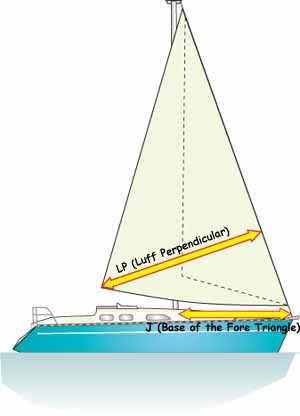
Foresail Area
The foresail would be just as easy if it exactly fitted the fore-triangle but usually the sail will be high-cut or will overlap the mast - or both.
So the calculation becomes:
Sail Area = (luff perpendicular x luff)/2
For more on this subject, take a look at Understanding Sail Dimensions...
A Final Word on Boat Displacement etc...
So to summarize, the criteria associated with good performance under sail are:
- Boat Displacement: the lower the better, as the power requirement is directly proportional to displacement. Provided, of course, that light displacement doesn't come at the cost of structural integrity;
- Waterline length: the longer the better, as wave-making resistance is inversely proportional to waterline length;
- Wetted area: the less the better, particularly in areas where light airs prevail, as hull drag is directly proportional to wetted area;
- Sail area: the more the better, within reason, as power production is directly proportional to sail area. Having to reef early is much less frustrating than wishing you had an extra metre or so on the mast when the wind falls away.
- For real 'Get Up and Go' a sailboat will have a low Displacement/Length ratio and a high Sail Area/Displacement Ratio.
But performance in an offshore cruising sailboat isn't just about speed. Whilst, as part of the deal for getting their hands on the silverware, a racing crew will cheerfully accept the high degree of attentiveness needed to keep a twitchy racing machine on her feet, a cruising sailor most definitely won't.
For us, a degree of speed will be readily sacrificed for a boat that's easy on the helm, and which rewards its crew with a gentler motion and more comfortable ride.
And whilst talking of comfort, Ted Brewer's 'Comfort Ratio' has much to do with Boat Displacement.
Recent Articles
-
Hustler Sailboats: History, Models, & Buying Guide for UK Sailors
Jul 12, 25 03:59 AM
Explore the legacy of British-built Hustler sailboats like the Hustler 30 & Oyster SJ35. Discover their design, construction, performance, and what to look for when buying a used model. -
Hurley Sailboats: Seaworthy, Classic Cruisers & Buying Guide
Jul 11, 25 02:59 AM
Discover the enduring appeal of Hurley sailboats! Explore their history, robust design, iconic Hurley 22, and essential tips for buying a used Hurley. Your go-to guide for these classic seaworthy yach… -
B&R Rig Explained: Hunter Sailboat Mast Design Pros & Cons
Jul 10, 25 11:08 AM
Demystify the B&R rig, a unique mast design found on many Hunter sailboats. Learn its advantages for cruisers, key features, and potential downsides.
